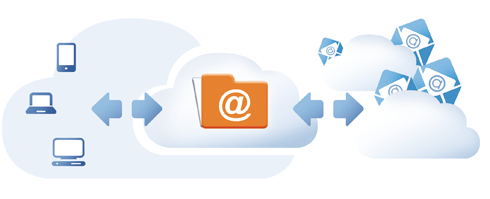
There are various scenarios in which IT managers will be required to address the issue of “email migration”. A change of email server or, in the case of companies that don’t have their own email server, a change of the email provider can make email migration or “transfer” appear inevitable. IT managers will often come across MailStore Server when carrying out internet research for tools which they intend to use as migration tools. In the following blog, we explain why that doesn’t make sense, and the alternative we would recommend instead.
No Historic Emails on the New Email Server
MailStore Server is a software solution for archiving emails that supports email archiving at a central location. If a company is in the process of changing its email infrastructure and intends to deploy a brand-new email server, it hardly makes sense to encumber the new system by transferring countless old emails to it. Instead, we recommend a different path involving MailStore Server:
Email Archiving Offers Much More Than Migration
Archive your emails. Transfer all your emails to a central archive. Aside from meeting various legal requirements, email archiving provides you with added benefits and avoids burdening your new system with an immense volume of historic data right from the start! On the contrary, you can even have a good “clear-out” and delete any emails that no longer have to be retained, while defining retention policies that can help you comply with GDPR requirements. By defining individual retention policies, administrators can gain full control over how long emails are archived. They decide themselves whether and, if so, when certain emails are automatically deleted from the archive, thus complying with different retention periods, be it statutory or regulatory. Meanwhile, for all Microsoft Outlook users in the company, most things remain the same: thanks to the Outlook Add-in, they continue to enjoy full access to all the archived emails from their customary working environment. Only the process of searching for emails and file attachments is different: It’s faster and allows users to locate even very old emails in a matter of seconds! And that can only help to increase productivity.
Conclusion: When administrators and IT managers face the Herculean task of migrating all the emails in their company, they should seriously consider procuring an email archiving solution. Doing so will streamline the migration project and protect against data loss, while simplifying backup and restore processes and reducing storage requirements. So the motto is: archive rather than migrate.
Image source: ssp-europe-it
Source: MailStore


